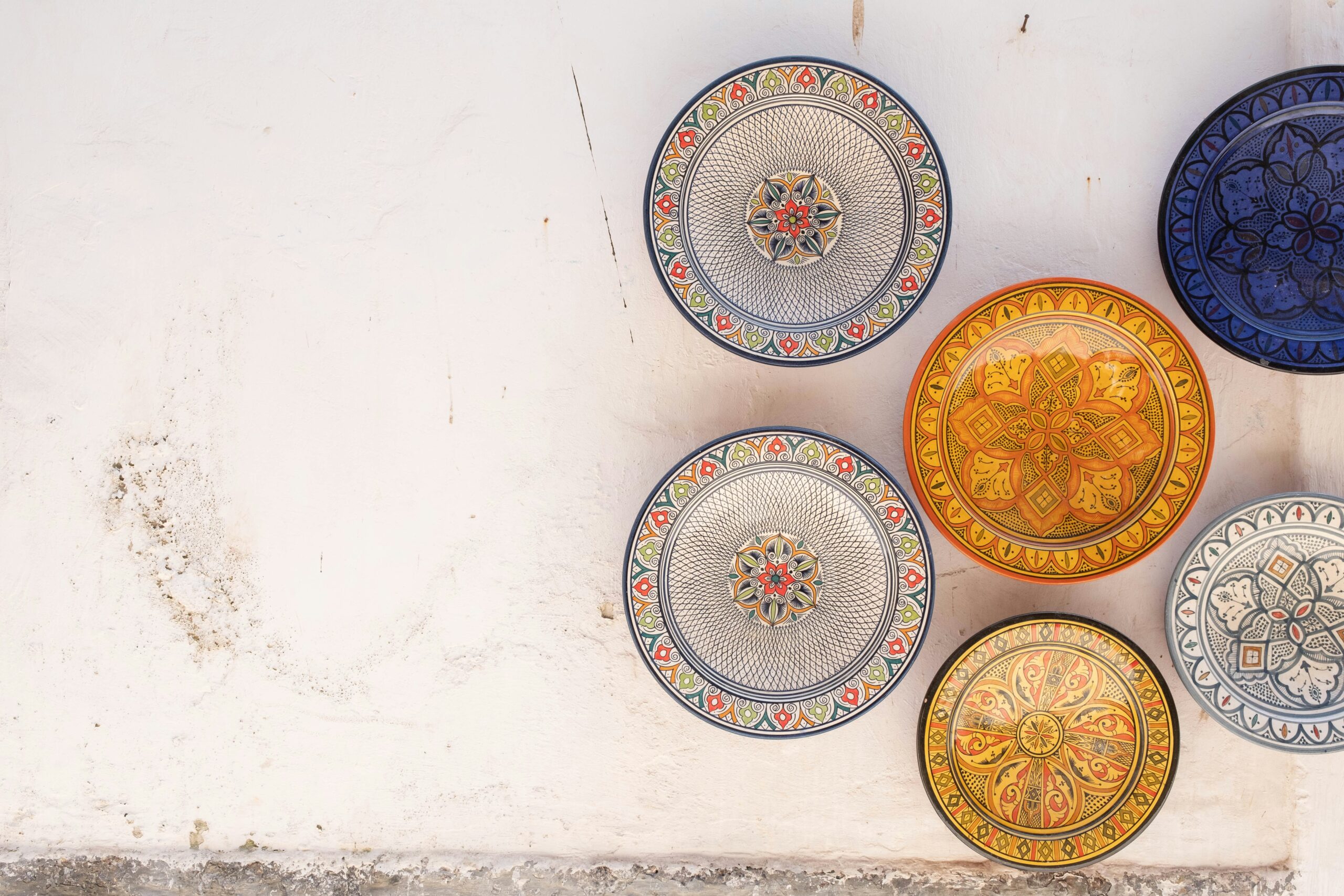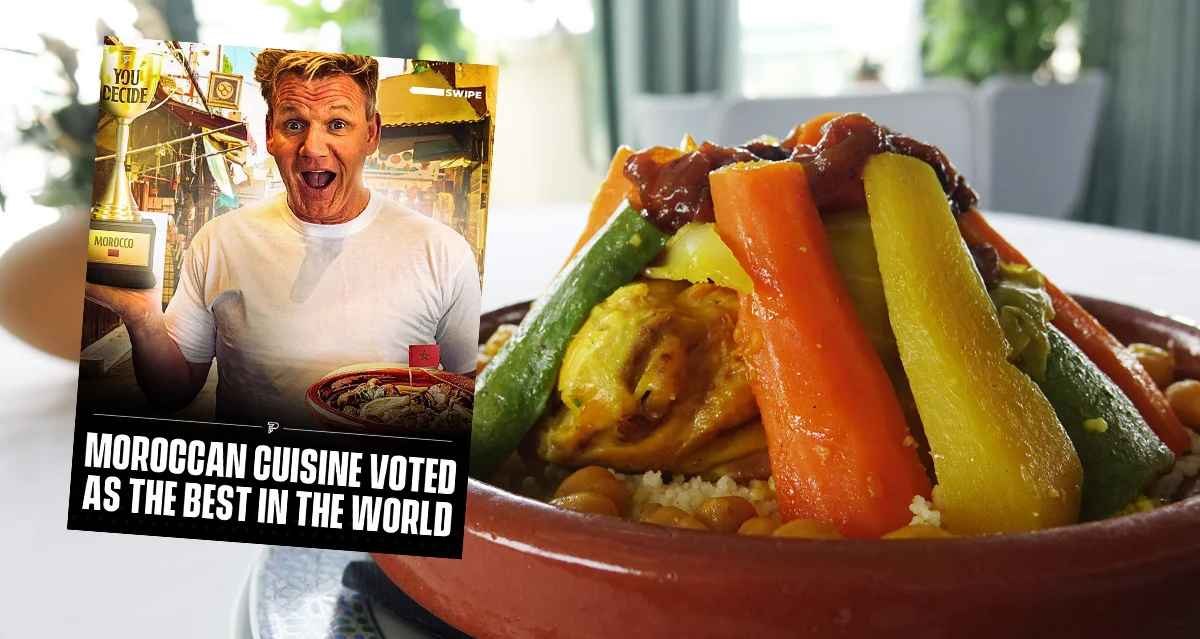Exploring the Rich and Flavorful World of Moroccan Dishes
August 24, 2024 | by [email protected]

Introduction to Moroccan Cuisine
Moroccan cuisine, known for its rich and vibrant flavors, is a testament to the country’s diverse cultural heritage. The culinary traditions of Morocco have been significantly shaped by a myriad of influences, including Berber, Arabic, Andalusian, and Mediterranean cultures. Each of these influences has contributed to the unique and complex flavor profiles that Moroccan dishes are renowned for today.
One of the defining features of Moroccan cuisine is its extensive use of spices and aromatic ingredients. Commonly used spices such as cumin, coriander, saffron, and cinnamon are integral to the flavor and aroma of many Moroccan dishes. Additionally, herbs like parsley and cilantro, along with ingredients like olives, dates, and almonds, are frequently used to enhance the richness and depth of Moroccan culinary creations.
The essence of Moroccan food lies not only in its ingredients but also in the traditional practices surrounding its consumption. Communal eating is an important aspect of Moroccan culture, with meals often served on large communal platters. This approach emphasizes the values of sharing and togetherness, which are deeply embedded in Moroccan society. Signature dishes such as tagines and couscous are typically presented in beautifully designed earthenware, adding to the dining experience.
Moroccan cuisine is also notable for its balance of sweet and savory flavors. Many dishes masterfully blend meat with fruits such as apricots, raisins, and prunes, creating a harmonious contrast that delights the palate. This culinary tradition reflects the historical trade routes that brought exotic spices and ingredients to Morocco, making it a melting pot of flavors and culinary techniques.
In essence, Moroccan cuisine is a reflection of the country’s rich history and cultural amalgamation, embodied through its diverse ingredients and communal dining customs. It offers a sensory journey that captivates both the eyes and taste buds, making it a cuisine worth exploring and savoring.
Staple Moroccan Dishes You Must Try
Moroccan cuisine is a tapestry of flavors, scents, and textures, offering a culinary experience that is both unique and unforgettable. At the heart of this vibrant culinary tradition are several staple dishes that are integral to the Moroccan dining experience. Understanding these dishes involves not just appreciating their flavors, but also the cultural context in which they are enjoyed.
One of the most iconic Moroccan dishes is Tagine. Named after the earthenware pot in which it is cooked, a tagine is a slow-cooked savory stew that combines meat (often lamb or chicken), vegetables, and a mélange of spices like saffron, cumin, and cinnamon. The slow cooking method allows the flavors to meld together, creating a dish that is both hearty and aromatic. Tagines are often enjoyed with crusty bread, used for scooping up the rich, flavorful sauce.
Couscous is another cornerstone of Moroccan cuisine. This steamed semolina dish is often served as a base for meats, vegetables, and a variety of sauces. Traditionally, couscous is prepared by steaming the semolina over a pot of simmering stew, ensuring that it remains light and fluffy. In Moroccan households, it is often served on Fridays, the holy day in Islam, symbolizing community and togetherness.
Harira is a traditional soup that holds particular significance during Ramadan, the holy month of fasting in Islam. Made from a rich tomato broth with lentils, chickpeas, and a mix of aromatic herbs and spices, Harira is typically served to break the fast at sunset. Its hearty and nourishing qualities make it a beloved staple in many Moroccan homes.
Bastilla, also known as Pastilla, is a unique pastry that beautifully blends savory and sweet elements. Traditionally made with pigeon, but often substituted with chicken, the filling is encased in thin warqa dough, creating a crispy exterior. The interior often includes eggs, almonds, and a generous dusting of powdered sugar and cinnamon, resulting in a complex flavor profile that is both sweet and savory.
Each of these dishes offers more than just sustenance; they embody the rich cultural heritage of Morocco. Whether enjoyed in a bustling market or a cozy home, these iconic Moroccan dishes are a culinary experience that captures the essence of this vibrant cuisine.
Moroccan Street Food and Desserts
Morocco’s vibrant street food scene offers a tantalizing array of flavors and textures, encompassing everything from savory snacks to delectable sweets. One of the standout street foods is Msemen, a flaky, pan-fried bread that is often enjoyed during breakfast or as a snack. Msemen’s preparation involves folding dough multiple times to create a layered texture before it is cooked on a skillet, yielding a crispy exterior and soft interior. It is commonly served with honey or jam, and sometimes complemented by a cup of traditional Moroccan mint tea.
Another popular street food is Maakouda, delicious potato fritters that are crispy on the outside and tender within. These fritters are made by mixing mashed potatoes with spices, forming patties, and then frying them until golden brown. Maakouda is often sold by street vendors as a quick, savory treat and is sometimes served in sandwiches with harissa sauce.
No exploration of Moroccan street food would be complete without mentioning Sfenj, Moroccan doughnuts that are beloved for their airy texture and slightly chewy bite. Sfenj are made from a simple dough of flour, water, and yeast, which is then deep-fried until they puff up and develop a golden color. These doughnuts are typically enjoyed plain or dusted with sugar, making them a popular choice for breakfast or an afternoon snack.
Transitioning to the realm of desserts, Morocco’s sweet offerings are equally captivating. Chebakia, intricate sesame cookies shaped into flower-like spirals and coated with honey, are a traditional Moroccan delight, particularly popular during the month of Ramadan. The dough is flavored with anise, orange blossom water, and cinnamon, resulting in a rich and aromatic treat.
Mhancha is another exquisite dessert, named for its distinctive snake-like shape. This pastry is made by filling thin, phyllo dough with a fragrant almond paste, rolling it into coils, and baking until golden. Mhancha’s delicate layers and nutty filling make it a favorite at celebrations and gatherings.
Finally, no discussion of Moroccan cuisine is complete without mentioning traditional Moroccan mint tea. This refreshing beverage, made by steeping green tea with fresh spearmint leaves and sweetening it with sugar, is a staple in Moroccan culture. It is customary to serve mint tea to guests as a symbol of hospitality, and its preparation and pouring are often performed with a sense of ceremony.
Tips for Cooking Moroccan Dishes at Home
Embarking on a culinary journey through the vibrant flavors of Moroccan cuisine is both exciting and rewarding. To ensure success, having the right tools and ingredients is essential. One of the most iconic kitchen tools for Moroccan cooking is the Tagine pot. This conical, earthware cooking vessel is designed to facilitate slow-cooking, allowing flavors to meld together beautifully. While an original Tagine is ideal, a heavy-bottomed Dutch oven can be a good alternative for those who don’t have easy access to one.
Spices are the soul of Moroccan dishes, infusing depth and warmth into every bite. Key spices you should have in your pantry include cumin, coriander, cinnamon, turmeric, and paprika. A special blend known as Ras El Hanout, often used in Moroccan cooking, can either be purchased pre-made or created at home by combining several spices. Alongside these, fresh herbs like cilantro and parsley bring brightness to numerous recipes.
Finding authentic Moroccan ingredients can be a challenge, but local ethnic markets are a great place to start. They often carry a variety of essential spices, preserved lemons, and harissa. For those without local access, many reputable online stores offer a wide array of authentic Moroccan ingredients delivered right to your door.
If you are new to Moroccan cooking, some beginner-friendly recipes to try include Chicken Tagine with Apricots and Almonds, Couscous with Seven Vegetables, or Harira (a hearty Moroccan soup). These dishes are great starting points, allowing you to practice and familiarize yourself with Moroccan cooking techniques and flavors. Additionally, there are numerous resources available for learning, such as highly regarded cookbooks and online tutorial videos that deliver step-by-step instructions.
Finally, patience and practice are key when mastering Moroccan cuisine. The flavors are intricate and layered, requiring meticulous attention and time. Embrace the process, experiment, and soon you will develop an authentic feel for producing rich and flavorful Moroccan dishes right in your own kitchen.
RELATED POSTS
View all



